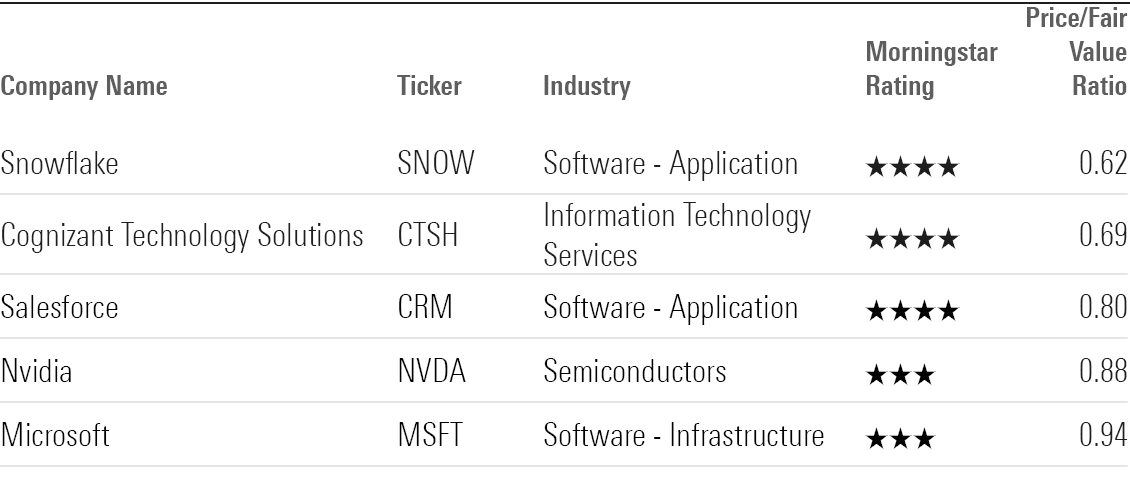Strategy customization is a key characteristic of AI stock predicting/analyzing trading platforms which allows traders to tailor the platform to meet their particular trading needs and risk tolerance as well as market conditions. A platform that offers extensive customization options can greatly enhance your trading effectiveness. Here are 10 strategies to help you evaluate the capabilities of a platform to modify your strategy
1. Evaluate Pre-Built Strategy Templates
A variety of templates. Check whether the platform has a wide range of strategies pre-built to suit different types of trading (e.g. day trading, swing trading or long-term investment).
Usability: Consider how easily these templates can be modified to meet your requirements.
Performance history: Make sure that the platform contains past performance data for pre-built strategic plans.
2. Assess Customized Strategy Creation
Drag-and-drop tools: Search for platforms that offer user-friendly drag and drop interfaces for customizing strategies.
Coding options: Check if the platform supports custom code (e.g., Python, R or any other scripting languages) for advanced users.
Flexibility: You should be able to define the entry/exit criteria along with risk management parameters as well as other components that are key to your plan.
3. Check for Backtesting Capabilities
Historical data: Find out whether your platform has enough historical data for testing backtesting strategies.
Customizable parameters - Ensure that you can change parameters (e.g. indicators, timeframes) while backtesting.
Performance metrics - Make sure to see if your platform has specific indicators of performance (e.g. the winning rate, Sharpe coefficient or drawdown) for all backtested strategies.
4. Evaluate Real-Time Strategy Testing
Paper trading: Ensure that the platform lets you play around with your strategies or to test them without putting any money at risk.
Live testing: Test your strategies on live markets by using tiny amounts of capital in order to determine their performance.
Real-time adjustments: Check whether you can modify your strategies at a moment's notice according to the market conditions.
5. Evaluate the degree of integration with technical indicators
Indicator library: Check whether the platform provides an extensive library of technical indicators (e.g. Moving averages, RSI, MACD).
Custom indicators: Make sure that you have the ability to import or develop custom indicators for your plans.
See if you are able to combine several indicators to make more complicated strategies.
6. Check for Risk Management Tools
Stop-loss/take-profit: Ensure the platform allows you to set stop-loss and take-profit levels within your strategies.
Position sizing - Check to see if there are any guidelines you can follow (e.g. an amount fixed or a percentage of your portfolio) to manage the risk.
Risk-reward Ratio: Confirm that the platform allows setting individual risk-reward levels to trades and strategies.
7. Evaluate Multi-Asset Strategy Support
Asset classes: Make sure the platform can help strategies across multiple asset categories (e.g. ETFs, stocks or options and forex).
Cross-asset strategies: Determine if you are able to make strategies that encompass various types of assets (e.g. pairs trading or hedging).
Market coverage. Check if the platform has market coverage that you are looking to invest in (e.g. US international, cryptocurrencies).
8. Review the automation and Execution
Automated trading: Ensure that the platform can automate execution of strategies using predefined rules.
Types of orders: Make sure that the platform can execute different types of orders including stop, limit, market and stop.
Latency: Check whether the platform is able to execute trades that have minimal latency particularly for strategies with high frequency.
9. Look for tools for optimizing your strategy.
Parameter optimization. Check that your platform permits you to improve the parameters of your strategy (e.g. Grid search, Genetic algorithms).
Machine learning: Ensure that the platform you choose to use has machine learning to help refine and optimize strategies.
Analyze scenarios: Determine if the platform permits you to test various strategies under different market situations (e.g. bear bull, bear volatile).
Review User Support for Community Reviews and Feedback
Feedback from users Conduct research on users to evaluate the effectiveness of the platform for customizing strategy.
Community forums: See whether you can locate a forum where users discuss and share custom strategies.
Support tools. Make sure there are webinars or tutorials that can help you create and optimize your strategies.
Bonus Tips
Trial period - Use the trial for free to try out the ability to customize your strategy.
Scalability is crucial. The platform needs to be able to manage strategies that become more complex as your trading grows.
Customer Support: Ensure that the platform has assistance for any concerns related to strategy or issues.
If you follow these guidelines, you can evaluate the capabilities of an AI platforms for analyzing and predicting stocks to customize strategy. This will enable you to select a trading platform that matches your goals in trading and permits you to apply and improve strategies. Platforms that have strong capabilities for customization can assist you in adapting to market changes, and improve the performance of your trading. Check out the recommended my website investing ai for more info including AI stock, trading with ai, AI stocks, ai investing app, ai investing app, ai trading, ai investing, chatgpt copyright, ai investing app, ai chart analysis and more.

Top 10 Tips On Assessing The Speed And Latency Of Ai Stock Prediction/Analyzing Trading Platforms
For algorithmic, high-frequency and active traders speeds and latencies are crucial when looking at AI platforms to forecast stock prices and analyze. Milliseconds of delay could affect profitability and trade execution. Below are the top 10 strategies for evaluating latency and speed on these platforms:
1. Real-time Data Feeds to be used for evaluation
Time to deliver data: The platform should deliver real-time, accurate information within the shortest amount of time (e.g. with sub-millisecond delays).
Closeness of data source: Determine whether servers are close to major exchanges.
Data compression: Verify whether the platform is using effective techniques for data compression to speed up data delivery.
2. Test trade execution speed
Time to process orders: Determine how fast the platform processes and executes trades once you have submitted an order.
Direct Market Access: Verify that the platform provides DMA. DMA is a feature which allows you to send orders directly to exchanges and without intermediaries.
Execution reports. Verify that the platform offers complete execution reports. These reports must include dates for order submission, confirmation and fill.
3. Examine the Platform's Responsiveness
User interface (UI speed) Find out how fast the system responds to inputs, like clicking buttons, or loading charts.
Chart updates - Make sure that the charts are updated in real time and without delay.
Performance of mobile apps. When using an app designed for mobile be sure that it is performing as quickly and efficiently as the desktop application.
4. Verify that the infrastructure is low latency
Server locations The platform should utilize high-speed, low-latency servers which are situated near major exchanges or financial hubs.
Co-location services: Check if the platform offers co-location, which allows you to host your trading algorithms on servers near to the exchange.
High-speed networks: Check if the platform uses high-speed fiber-optic networks or other low-latency technologies.
5. Backtesting and Evaluation of Simulation Speed
Check how quickly the platform analyzes and processes the historical data.
Simulation latency: Ensure that your platform can simulate trades without noticeable delay.
Parallel processing: Determine whether the platform uses parallel processing or distributed computation to speed complex calculations.
6. Check the API Latency
API response times: Find out how quickly APIs can respond to queries (e.g. retrieving data from the platform, placing orders).
Rate limits. Examine whether there are acceptable limits on the API. This will aid in preventing delays during high-frequency transactions.
WebSocket Support: Check whether your platform is compatible with WebSocket protocols to stream data in real-time at a low latency.
7. Test Platform Stability under Load
High-volume trading: Play high-volume trading scenarios in order to determine whether the platform is stable and responsive.
Market volatility: Test out the platform during periods that are high in volatility to see if it can handle rapid pricing adjustments.
See whether there are any tools available for testing strategies in extreme circumstances.
8. Assess Network and Connectivity
Internet speed requirements: Ensure your internet connection meets the recommended speed of your platform for optimal performance.
Redundant connection: Examine to see if there are redundant connections.
VPN latency: When using the VPN platform, verify whether the latency is high and if you have alternatives.
9. Check for speed optimization features
Pre-trade analytics: Make sure the platform has pre-trade analysis to optimize the routing of orders and speed of execution.
Smart order route (SOR) : Check to see if SOR is used by the platform to determine the most speedy and most cost-effective execution locations.
Monitoring latency: Find out whether the platform has tools to monitor and analyze the latency in real-time.
Review User Feedback & Benchmarks
User reviews: Review user feedback to evaluate the platform's speed and latency performance.
Third-party benchmarks by third parties. Look for independent benchmarks or reviews that assess a platform's speed with other platforms.
Case studies: See whether the platform has case studies or testimonials, highlighting its capabilities for low-latency.
Bonus Tips
Trial time: You are able to use a free demo or trial to test out the performance and latency of the platform.
Customer support: Make sure that the platform has assistance for issues related to latency or for optimization.
Hardware requirements. Verify whether the system is compatible with specific hardware like high-performance computers.
If you follow these guidelines, you can effectively assess the performance and speed of AI stock-predicting and analyzing trading platforms, ensuring you choose one that is compatible with your trading needs and minimizes the time it takes to complete. Platforms that are low-latency are essential for high-frequency algorithmic traders. The slightest delay can adversely affect their earnings. Have a look at the recommended ai copyright signals tips for blog examples including ai options trading, chart analysis ai, investing with ai, best ai trading platform, AI stock trader, best ai for stock trading, ai options, AI stock investing, best ai for stock trading, AI stock prediction and more.
